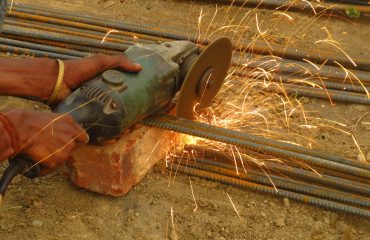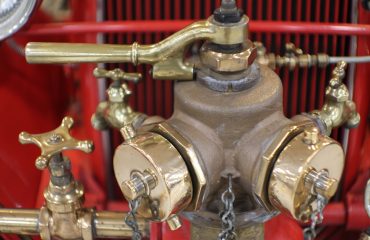In a world increasingly conscious of hygiene and infection control, the development of antibacterial surfaces is paramount. One material leading the charge is stainless steel, a durable and versatile metal now enhanced with antimicrobial properties. This post delves into the world of antibacterial steel surfaces, exploring their mechanisms, applications, advantages, and limitations.
The Science Behind Antibacterial Steel: How Does It Work?
Antibacterial stainless steel isn’t simply “treated” steel; its antimicrobial properties are often integrated at a molecular level. Several methods achieve this:
- Silver Ion Incorporation: This is a common approach. Silver ions (Ag+) are highly effective against a broad spectrum of bacteria and viruses. They disrupt cellular processes, leading to microbial death. Silver can be incorporated into the steel during the manufacturing process, either through alloying or surface deposition techniques. The silver ions are slowly released from the steel surface, providing a continuous antimicrobial effect.
- Copper Alloying: Copper, another known antimicrobial agent, can be alloyed with stainless steel to create a material with inherent antibacterial properties. Similar to silver, copper ions interfere with microbial metabolism, resulting in bacterial inactivation.
- Surface Coatings: Various antimicrobial coatings can be applied to the surface of stainless steel. These coatings may contain nanoparticles of silver, copper, or other antimicrobial agents, or they may be based on antimicrobial polymers. These coatings offer an additional layer of protection but may have a limited lifespan, requiring eventual reapplication.
- Electrochemical Treatments: Techniques like electrochemical polishing or anodization can modify the surface of stainless steel, making it less hospitable to bacterial growth. These methods alter the surface roughness and charge, reducing bacterial adhesion.
Applications of Antibacterial Steel: Where It’s Making a Difference
The antimicrobial properties of steel make it ideal for a wide range of applications where hygiene is crucial:
- Healthcare Settings: Hospitals, clinics, and other healthcare facilities are prime candidates for antibacterial steel surfaces. Work surfaces, door handles, handrails, and medical equipment made from this material can significantly reduce the spread of healthcare-associated infections (HAIs).
- Food Processing Facilities: In food preparation areas, preventing bacterial contamination is paramount. Antibacterial steel surfaces in kitchens, food processing plants, and restaurants can help maintain hygiene standards and minimize the risk of foodborne illnesses.
- Public Spaces: High-touch surfaces in public areas like airports, train stations, and shopping malls are frequently exposed to a wide range of microbes. Antibacterial steel can contribute to a cleaner and healthier environment in these locations.
- Residential Settings: While less common, antibacterial steel is increasingly finding its way into homes, particularly in kitchens and bathrooms, offering an extra layer of hygiene protection.
Benefits of Choosing Antibacterial Steel: A Cost-Benefit Analysis
The advantages of using antibacterial steel extend beyond its antimicrobial properties:
- Reduced Infection Rates: The primary benefit is the reduction in the spread of bacteria and viruses, leading to lower infection rates, particularly in healthcare settings.
- Improved Hygiene: Antibacterial steel simplifies cleaning and disinfection procedures, contributing to a cleaner and more hygienic environment.
- Durability and Longevity: Stainless steel is inherently durable and resistant to corrosion, ensuring the longevity of the antimicrobial properties.
- Easy Maintenance: While regular cleaning is still necessary, antibacterial steel generally requires less intensive cleaning and disinfection compared to traditional materials.
- Cost-Effectiveness (Long-Term): Although the initial cost might be slightly higher than standard stainless steel, the long-term benefits in terms of reduced infection rates, cleaning costs, and improved hygiene often outweigh the initial investment.
Limitations and Considerations: A Realistic Perspective
While antibacterial steel offers significant advantages, it’s crucial to acknowledge its limitations:
- Not a Complete Solution: Antibacterial steel is not a magic bullet. Proper hygiene practices, including regular cleaning and disinfection, are still essential to maintain a hygienic environment.
- Specific Antimicrobial Effectiveness: The effectiveness of antibacterial steel varies depending on the specific method used to incorporate antimicrobial properties and the type of microbes involved. It may not be equally effective against all bacteria and viruses.
- Potential for Microbial Resistance: Although less common with silver and copper, there’s a theoretical risk of microbial resistance developing over time. However, this is less of a concern compared to antibiotic resistance seen with pharmaceuticals.
- Cost: Antibacterial steel is generally more expensive than standard stainless steel.
The Future of Antibacterial Steel: Innovation and Advancements
Research and development in antibacterial steel continue to advance. Future innovations may include:
- Novel Antimicrobial Agents: The exploration of new antimicrobial agents with enhanced efficacy and reduced potential for resistance.
- Improved Coating Technologies: The development of longer-lasting and more durable antimicrobial coatings.
- Self-Cleaning Surfaces: Integration of self-cleaning properties, further reducing the need for manual cleaning.
- Sustainable Manufacturing Processes: Focus on environmentally friendly manufacturing processes to minimize the environmental impact of producing antibacterial steel.
In conclusion, antibacterial steel surfaces represent a significant advancement in hygiene and infection control. While not a panacea, it offers a valuable tool in the fight against microbial contamination across various sectors. Its effectiveness, durability, and ease of maintenance make it a compelling choice for applications where hygiene is paramount. Continued research and development promise even more sophisticated and effective antibacterial steel solutions in the future.
Tags: Antibacterial Steel, Antimicrobial Steel, Stainless Steel Hygiene, Infection Control, Healthcare Hygiene




